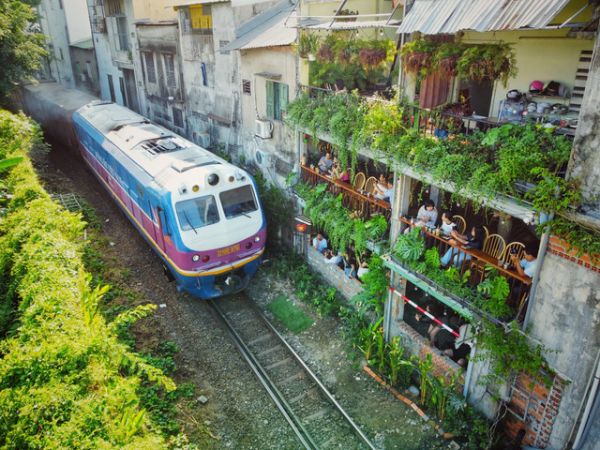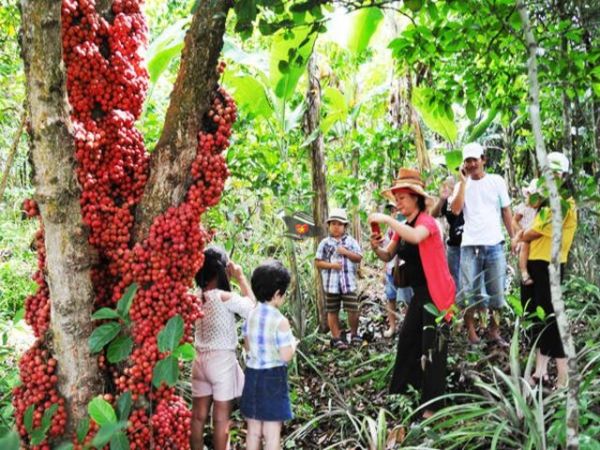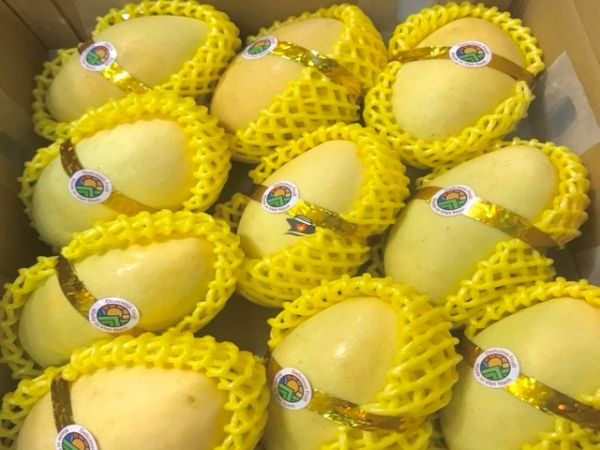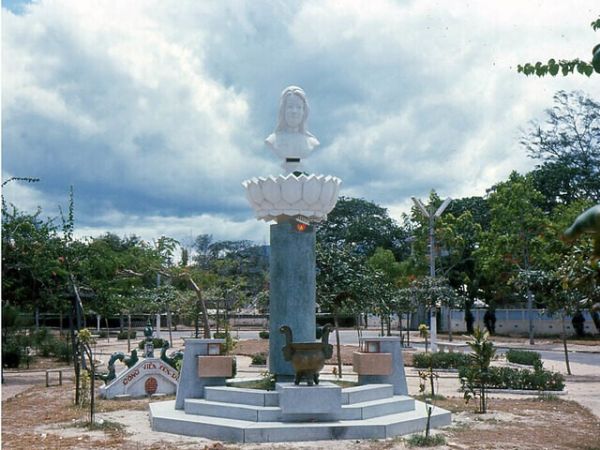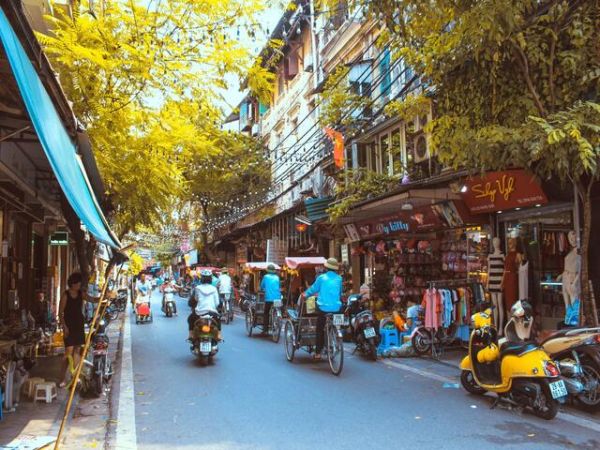HOI AN TRAVEL GUIDE 2025

Hoi An Travel Guide 2025. Hoi An is consistently ranked among the best tourist attractions in Vietnam for a variety of reasons. To learn more about this city in preparation for your forthcoming vacation, read this article till the conclusion and begin preparing as specifically as possible.
Hoi An Travel Guide 2025 Information:
Hoi An, Vietnam, leaves a lasting impact on travelers due to a variety of factors, including the tranquility of the historic town, the rustic beauty of artisan villages, the remoteness of beaches, and the wonderful foods with distinctive tastes. That is why you should pack your belongings and travel to Hoi An as soon as possible.
Hoi An is a provincial city that covers around 61.71 square kilometers. The location is on Quang Nam Province's coastal plain, downstream of the Thu Bon River. It is around 60 kilometers northeast of Tam Ky City and 30 kilometers southeast of Da Nang City. Hoi An's position allows for both biological and geographical variety.
The city is divided into two parts: the ancient quarter (also known as Hoi An Ancient Town) and the rest. The first section is in Minh An Ward, and it includes popular streets like Phan Chu Trinh, Tran Hung Dao, Tran Phu, Hai Ba Trung, Le Loi, and Nguyen Hue. Meanwhile, the opposite side boasts numerous tranquil villages, scenic beaches, and eco-tourism destinations that you should not miss.
According to travel feedback from many travelers, Hoi An is a desirable place that can be visited all year. The weather in Hoi An varies by season, as follows:
- The Dry Season (February–August):
The best time to visit Hoi An is between February and the end of April. At that time, the weather is cool and sunny, with occasional light rains. As a result, it is appropriate for a wide range of outdoor sports and sightseeing.
From May to August: No rain falls in Hoi An throughout the summer. You may discover that some days are really hot. As a result, if you want to visit Hoi An at that period, you should pack sunscreen or other sunlight-blocking items.
- The Rainy Season (September until the end of January):
During this time, Hoi An has frequent and heavy rains, making it difficult for tourists to navigate. Even on rainy days, there are plenty of intriguing things to do in Hoi An. If you wish to visit Hoi An during this season, you should check the weather and arrange your own itinerary before leaving.
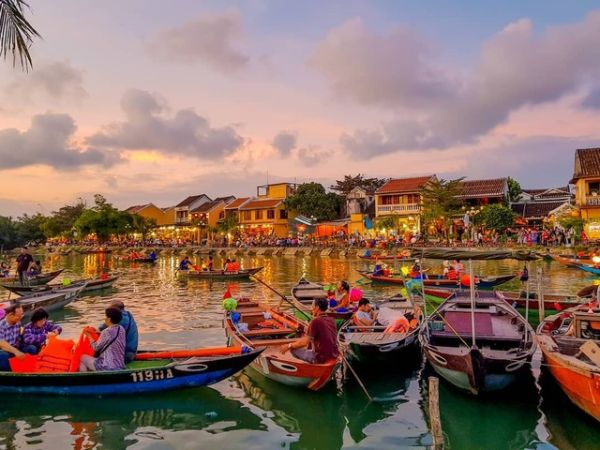
How to get to Hoi An, Vietnam?
By Airplane: This is the quickest method to reach Hoi An. From Hanoi or Ho Chi Minh City, you can purchase plane tickets to Da Nang and then go to Hoi An by Bus or Grab Car. It will only take one hour and cost between 400,000 and 1,600,000 VND every journey.
By Train: Your trip will end at Da Nang Station or Tra Kieu Station, with a total travel time of around 15 - 20 hours. Sleeper buses go from Hanoi to Hoi An or Ho Chi Minh City to Hoi An.
Da Nang's international airport is a 50-minute drive from the Ancient Town. Domestic flights from Vietnam's major cities to Da Nang are available, as are direct flights from smaller hubs. Hoi An is also accessible by bus or shuttle van from surrounding cities such Vietnam Nha Trang, Da Nang, and Hue. Walking and cycling are perfect for exploring the Ancient Town and the surrounding countryside. Taxis and ride-hailing applications can also transport you around. Ask your hotel about renting a private car for longer travels.
Getting Around in Hoi An:
By Bicycle: This is the ideal way to travel around and experience the calm life of the historic town. Some hotels in Hoi An provide complimentary bicycles for guests, or you can hire one for around 50,000 VND per day.
Renting a motorbike can make it easier for you to go about Hoi An. The rental rate ranges from 150,000 to 180,000 VND per day.
Pedicabs/Rickshaws are common transportation in Hoi An Ancient Town. To obtain the greatest deal, take a cyclo on Phan Chau Trinh Street or Tran Phu Street, which usually costs around 200,000 VND for each journey and hour.
Taxis are another popular mode of transportation among visitors. A 4-seat cab in Hoi An costs between 11,000 and 15,000 VND/kilometer for trips of less than 30 kilometers and 9,000 to 12,000 VND/kilometer for trips of 31 kilometers or more.
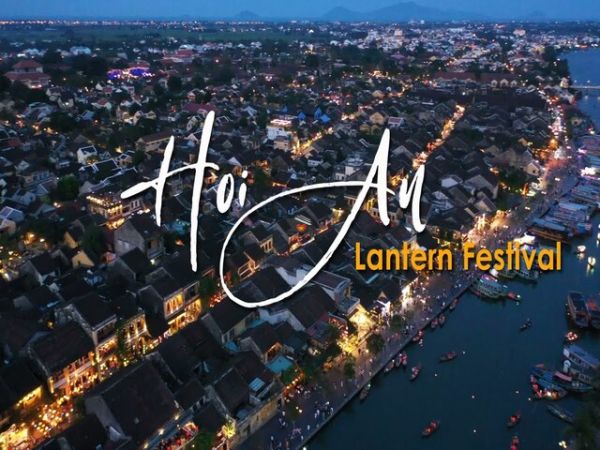
Top Sightseeing Must-See in Hoi An Vietnam:
Phuc Kien Assembly Hall: This is where merchants generally come to pray for good weather on their forthcoming excursions. The assembly hall still has its distinctive architecture, including a three-door gate, a shrine, and some enormous incense coils.
The Quang Dong Assembly Hall was completed in late 1885 with an ornate and sophisticated design. This location has several exquisite and unusual pottery objects. The designs on these objects, in particular, depict the ancient Cantonese people's daily existence.
The Trieu Chau Assembly Hall was established in the mid-nineteenth century by the overseas Chinese community to worship Ma Yuan. With its distinctive creative architecture, it is an ideal cultural destination in Hoi An, with several historical significances.
Tan Ky Ancient House: This is Hoi An's oldest house, dating back over 200 years, and was formerly the home of the noble Le family. Tan Ky Old House still has its unique old architecture and has plenty of space to showcase various antiquities.
Phung Hung Old House: Unlike other old houses, it has a particular charm and a relatively modern architectural style. The structure is composed of high-quality wood, giving it a beautiful appearance.
The Japanese Bridge in Hoi An is regarded as an icon of the historic town and a tribute to Hoi An's numerous cultural influences. Inside the temple, people worship Bac De Tran Vo, who is said to preserve the land and provide good luck to the villagers. What distinguishes this bridge is that it is printed on the 20,000 VND polymer currency.
Hoi An's Night Market is a popular location for many travelers visiting Quang Nam. At that market, you will be immersed in a lively shopping environment and drawn to various foods with distinct regional flavors. Some Hoi An food delicacies to try are cao lau, Quang noodles, banh mi, wonton, water fern cake, and Hoi An chicken rice.
Tra Que Vegetable Village is an excellent choice for visitors seeking freshness and peace in Hoi An. Coming there, you may participate in several fun activities such as witnessing a farmer's everyday life, taking a foot bath with Tra Que herbs, or exhibiting your culinary abilities in workshops. Furthermore, there are several famous cuisines with distinct flavors for you to savor.
Cham Islands provide an opportunity to immerse oneself in nature while also participating in a variety of exciting activities. Furthermore, the islands are ideal for learning about the local culture and religion through visits to spectacular monuments like as Hai Tang shrine, the Cham people's old spring, and the Nest Craftsman shrine.
"An Bang" Beach is one of Hoi An's most popular beaches. It is largely undisturbed by urban growth, allowing you to get away from the rush and bustle of life and calm your thoughts.
The Bay Mau Coconut Forest in Hoi An is a renowned tourist destination. This woodland is located in Cam Thanh hamlet, which is 5 kilometers from the historic town of Hoi An. The forest's main pastime is rowing and admiring the natural beauty. Many marine and plant species, as well as coconut, live in the region. Visitors can join the local fishermen to learn some of the village people's traditional fishing practices. At this gorgeous natural marvel, there are many fantastic activities to do, such as trying freshly caught and prepared seafood, such as shrimp and crabs.
The Reaching Out Teahouse is a wonderful cafe in the center of the historic city, staffed by people with hearing or speech impairments. You are encouraged to order in sign language and enjoy the cafe's tranquil atmosphere. Profits are reinvested in training and employment services for people with physical limitations.
Hoi An is a massive bespoke clothes market, with every business selling tailor-made products ranging from suits to shoes, purses to swimsuits. If you have a vision for an item, Hoi An is where you may get it manufactured in Asia.
Hoi An has the greatest range of cooking schools in Vietnam, and with the bulk of them nestled among rice terraces and mangrove woods, you'd be a fool to pass up the chance to acquire some skills here.
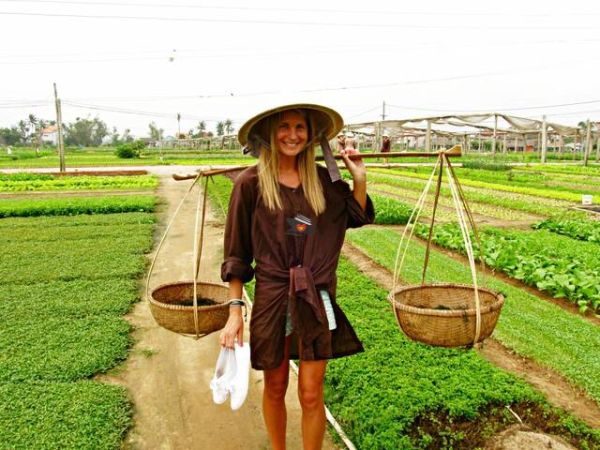
What To Eat in Hoi An?
Hoi An is famed for a variety of cuisines, including cao lau, white rose dumplings, and banh mi. Another favorite food that I can only obtain in Hoi An is wontons with mango and tomato salsa.
Central Vietnamese cuisine is perhaps the greatest in Vietnam, and Hoi An is a gastronomic hotspot for the region. Hoi An has all of the ingredients that make central Vietnamese cuisine great: distinct noodle variations, fresh herbs, crunchy toppings, a plethora of dipping sauces, aromatic broths, and, most importantly, meals that connect with their surroundings and speak for the people who serve them. This guide focuses on must-try Hoi An meals and other Quang Nam Province specialties to help visitors discover the province's diverse culinary scene.
1. Cao Lau Noodles Hoi An:
Cao Lau, Hi An's signature noodle dish, consists of thick, oily noodles topped with barbecued Xa Xiu Pork and fried rice croutons, and is served with greens, herbs, bean sprouts, and a splash of broth. Cao Lau appeals to a wide range of individuals; it's an entry point for those unfamiliar with Southeast Asian flavors, but it's also unusual enough to pique the interest of even the most seasoned foodies. Despite its popularity, Cao Lau has yet to spread beyond central Vietnam: the meal is only available in Quang Nam province.
Cao Lau plays an important role in Hoi An's culinary legacy, with origins dating back to Japanese and Chinese tradesmen who lived and worked here between the 15th and 19th centuries. Cao Lau, unlike Mi Quang Noodles, a popular morning meal, is consumed on occasion rather than on a daily basis, probably due to its heavier, richer nature.
There are several eateries in Hội An that serve Cao Lau, and I don't have a particular favorite. "Cao Lau Khong Gian Xanh" at 687 Hai BaTrung Street delivers a big and flavorful quantity in the heart of the Old Quarter. Further out from the center, "Cao Lau Lien" at 120 Tran Cao Van Street serves a delicious bowl of Cao Lau in a less visually attractive setting. "Cao Lau Lien" is named after the family matriarch, who had been serving Cao Lau in various rented places across Hoi An for many years. Lien currently relaxes at home while younger family members take care of things.
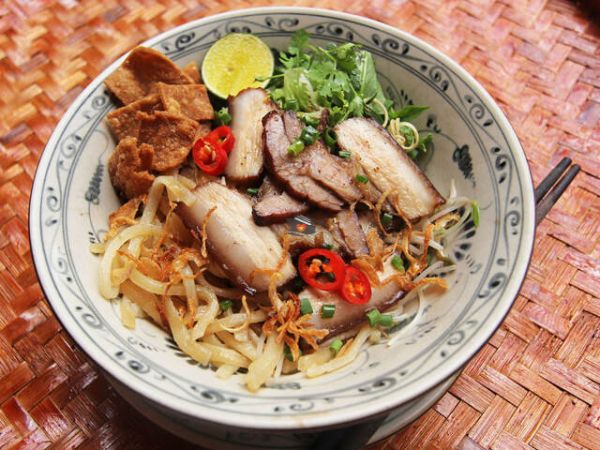
2. Mi Quang Noodles Hoi An:
Mi Quang, a noodle dish from central Vietnam, is named after the region of Quang Nam, which includes Hoi An. Mi Quang is a cold, moist noodle dish made with a fragrant combination of soft, flat Mi Noodles, shrimp, chicken, pig, fish, or frog, and a variety of fresh vegetables and herbs ,including mint, green papaya, lettuce, bean sprouts, and Asian basil. Peanuts, rice crackers, and quail eggs give texture, while a shallow broth binds all of the flavors together without drowning the dish's many components. Diners can add freshly squeezed lime juice and chili to their liking. Mi Quang is widely eaten throughout the day, and some believe that it is Vietnam's greatest breakfast. It's difficult to disagree.
Mi Quang Ong Hai at 6A Truong Minh Luong Street is famous among travelers in Hội An, situated in a quiet lane away from the busy tourist district. The restaurant design, which has been in operation for over 35 years, gives a sense of intimacy by featuring images of family weddings and holidays on the walls. Advertisements advertising transportation services and souvenirs for sale hint that the restaurant has shifted its attention to the tourist market, but the noodles are still excellent.
Mi Quang Co Ngu, located at 12 Cao Hong Lanh Street, is one of my favorite finds in Hoi An. With a selection of chicken or shrimp noodles (chicken being the most excellent, according to one customer), vendor Co Ngu shines at rapid service and great servings for those seeking a quick breakfast before heading to work. This is a remarkable gastronomic experience on a bustling street that would appeal to any traveler searching for the ideal breakfast pick-up. Among the several bowls of Mi Quang I tried in Hoi An, Co Ngu's was the finest. Arrive early before she sells out.
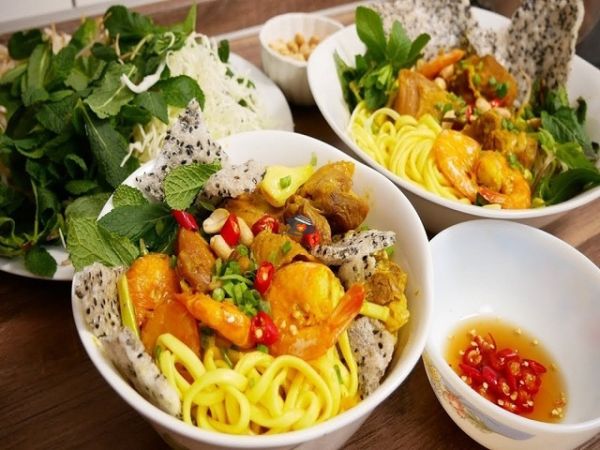
3. Chicken Rice Hoi An:
Hoi An Chicken Rice (Com Ga Hoi An) is distinguished by thin slices of aromatic chicken served over yellow-tinted rice and complemented by a fresh green salad. Outside of Hoi An, this Chinese-influenced Vietnamese classic is referred to as Comn Ga Tam Ky. The rice, which is colored by the chicken stock in which it is boiled, has a distinctive yellow hue and delicate flavor, while the salad normally consists of papaya, carrots, onions, fish sauce, coriander, and lime juice. The chicken can be served alongside the salad or separately. The accompanying broth may be utilized in a variety of ways, including wetting the rice, dipping sauce, and soup to wash everything down.
Starting with Com Ga Long at 53/16 Phan Chu Trinh Street, which is located in an alley just around the corner from the primary tourist area. Lanterns with the words 'Com Ga Long' written on them hang above the alley as orientation aids. It has an air of luxury, with wooden furnishings artfully arranged around the family residence courtyard. While the serving size is reasonable, the pricing is a little more than typical, at 45,000 - 50,000 VND.
Com Ga Xi at 47/2 Tran Hung Dao Street, located just up the road and along a separate lane, has a more lively environment. Tables and chairs operate brazenly from a fissure in the alleyway, preventing huge cars from passing by safely. Cơm Ga Xi restaurant celebrates alleyway characteristics, whereas Com Ga Long has a more pleasant and courteous setting. Whether you're looking for a street experience or a cozy supper with pals, the choice between Xi's and Long's ultimately comes down to your preferred atmosphere and the tenderness of your chicken.

4. River Clam With Triple-layered Rice Cracker:
Banh Dap (Rice Cracker) is a triple-layered rice cracker made up of two grilled rice crackers and one soft 'wet' rice paper in the middle. It was one of the first dishes I ate when I moved to central Vietnam in 2011, and I can still remember how surprised I was by the unusual flavors of the Mam Ca Com (fermented anchovy dipping sauce) that came with it. Hen Xao, a hot salad of baby clams, peanuts, onions, and coriander, complements the Banh Dap and completes the meal. Diners may enhance the flavors of each dish by adding a pinch of chili to the fermented anchovy dipping sauce and a splash of fish sauce to the Hen Xao (River Clam Stir-fried).
"Quan Banh Dap So 9" at 74 Nguyen Tri Phuong Street is located on an island in the Thu Bồn estuary, where baby clams were traditionally gathered. The setting is tranquil, with a moderate wind from the river offering relief from the central Vietnamese heat. In addition to Banh Dap and Hen Xao, Quan Banh Dap So 9 serves a range of other foods and beverages. The customer base is wide, ranging from local families arriving by vehicle to domestic tourists riding motorcycles. Surprisingly, international visitors are rarely seen here, maybe due to the distance from the Old Quarter and the unsightly, under-furnished structure. However, the short drive here is definitely worthwhile.
Hoi An, with its gorgeous scenery, excellent food, and unique architecture, has become a must-see destination in Central Vietnam. The above is a summary of things you should know before visiting Hoi An City. Hopefully, this travel advice will help you better plan for your trip to the old town with family and friends.
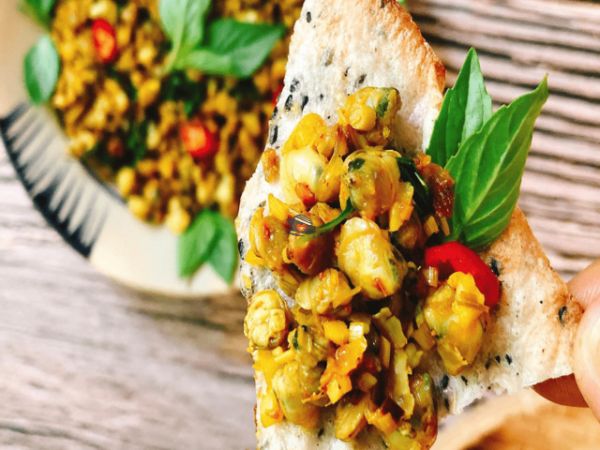
Hotline/ WhatsApp: +847-6666-0606
Email: info@friendlytravel.vn



